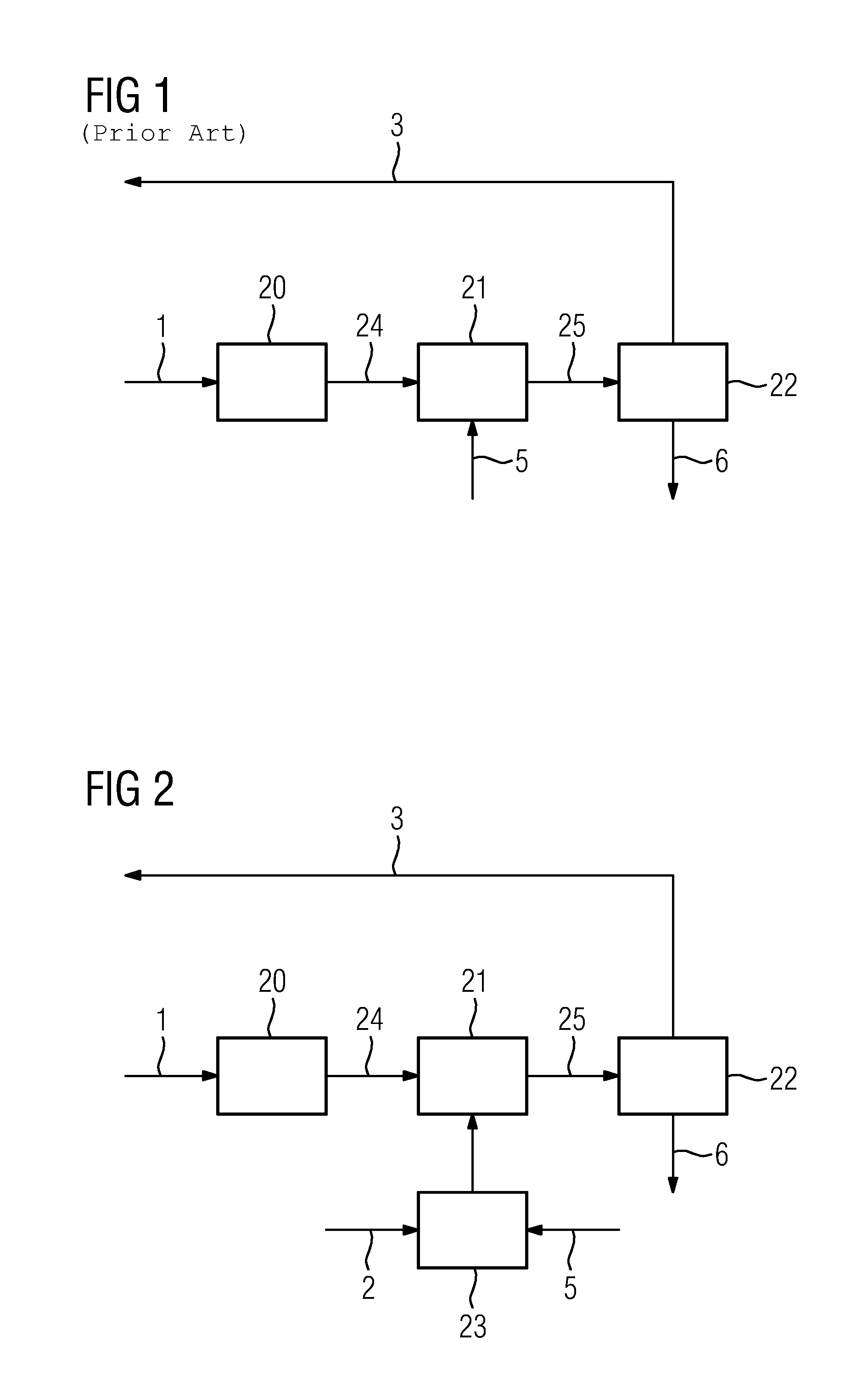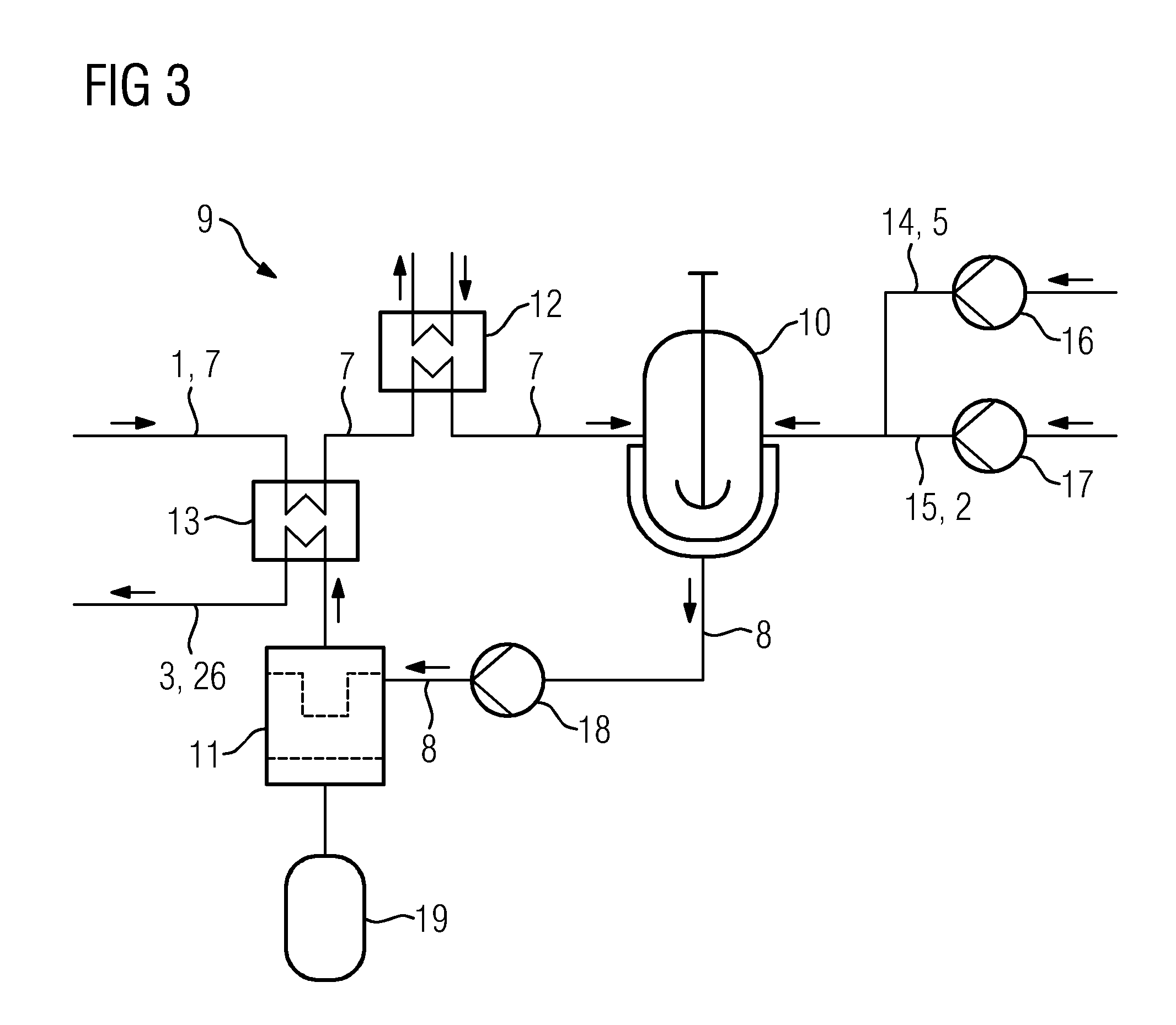Preparation of an amine based solvent contaminated by the introduction of sulfur oxides
a technology of sulfur oxides and amines, which is applied in the direction of liquid-gas reaction processes, gas-gas reaction processes, separation processes, etc., can solve the problems of high energy expenditure of distillation-based purification techniques, undesirable air pollution, and inability to improve the effect of detergents in the course of the process, so as to achieve the effect of high proportion of amines
- Summary
- Abstract
- Description
- Claims
- Application Information
AI Technical Summary
Benefits of technology
Problems solved by technology
Method used
Image
Examples
Embodiment Construction
[0026]FIG. 1 shows a method according to prior art based on three successive process steps.
[0027]In a first process step 20, a potassium-amino acid salt solution 1, contaminated with sulfite and sulfate, is fed in and cooled. As a result of cooling, the solubility of potassium sulfate drops below the specified potassium sulfate concentration, so that potassium sulfate crystallizes out, and a first suspension 24 is formed from contaminated solvent 1 and potassium sulfate, and is sent to a second process step 21.
[0028]In the second process step 21, a potassium compound 5 is introduced into the contaminated solvent 1, compensating for the loss of potassium from the solvent caused by potassium sulfate crystallization. The suspension 25 formed in the second process step is fed to a third process step 22.
[0029]In the third process step 22, the suspension 25 is filtered, wherein potassium sulfate 6 is separated, and a prepared solvent 3 is formed.
[0030]FIG. 2 shows an embodiment of the cla...
PUM
| Property | Measurement | Unit |
|---|---|---|
| temperature | aaaaa | aaaaa |
| temperature | aaaaa | aaaaa |
| boiling | aaaaa | aaaaa |
Abstract
Description
Claims
Application Information
 Login to View More
Login to View More - R&D
- Intellectual Property
- Life Sciences
- Materials
- Tech Scout
- Unparalleled Data Quality
- Higher Quality Content
- 60% Fewer Hallucinations
Browse by: Latest US Patents, China's latest patents, Technical Efficacy Thesaurus, Application Domain, Technology Topic, Popular Technical Reports.
© 2025 PatSnap. All rights reserved.Legal|Privacy policy|Modern Slavery Act Transparency Statement|Sitemap|About US| Contact US: help@patsnap.com



